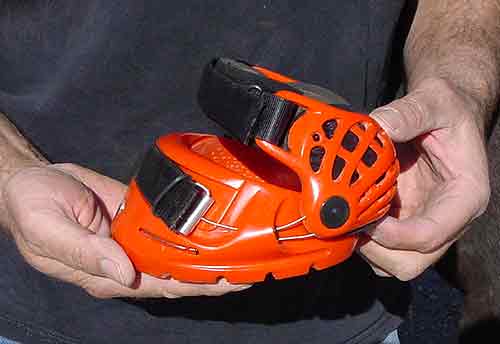
1. Always install hoof boots in a clear area and have somebody assist you in holding your horse. It is not recommended that you tie your horse during boot installation. If your horse is not already used to wearing hoof boots, let him spend some time doing so while turned out in an arena or similar enclosure with the boots installed until you are satisfied your horse is non reactive toward wearing them.
Seek the help of an equine professional if you are unsure about your safety when using, installing or removing hoof boots.
Inspect the boot before use to be sure it’s clean and in good usable condition.
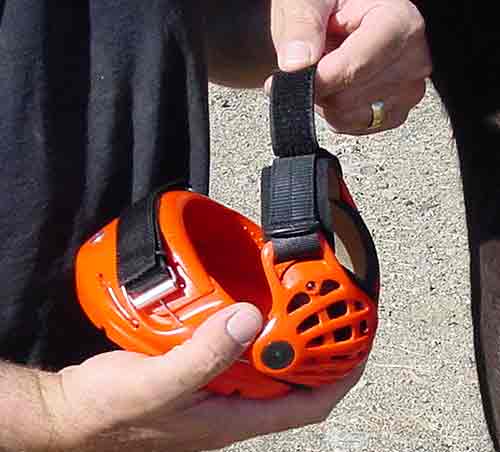
2. Release the pastern strap and the toe strap.
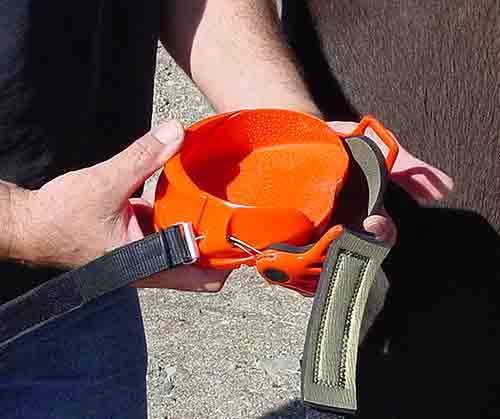
3. Pull the heel captivator down.
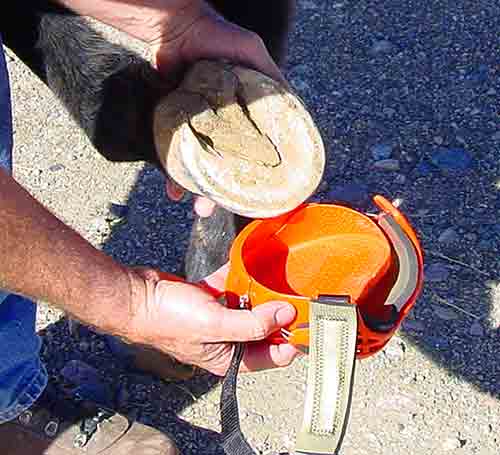
4. Pick up the hoof and insert the hoof into the boot.
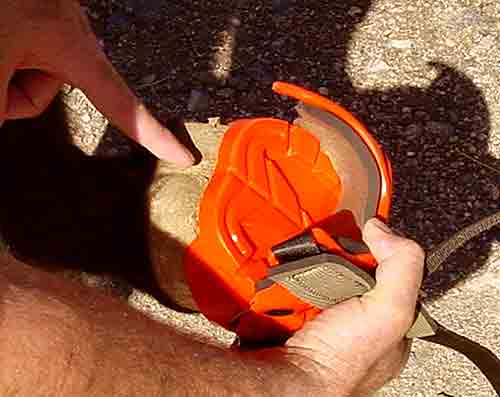
5. Be sure the boot is centered on the hoof.
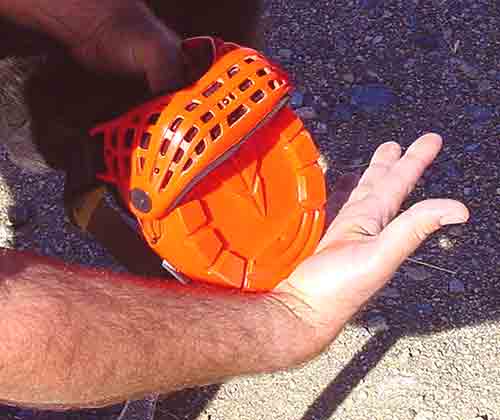
6. Gently seat the boot onto the hoof with the palm of your hand.
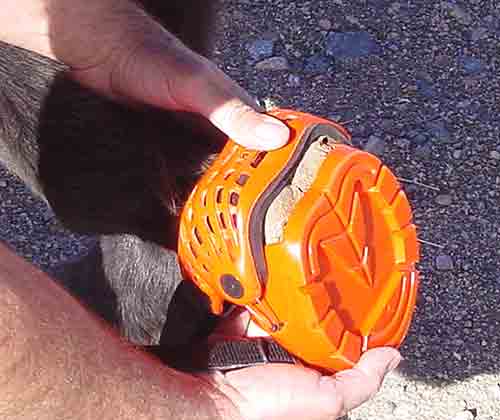
7. Pull the heel captivator well up onto the heel bulbs.
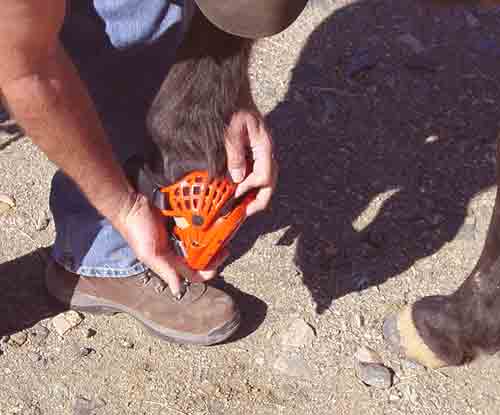
8. Place the hoof onto the ground.
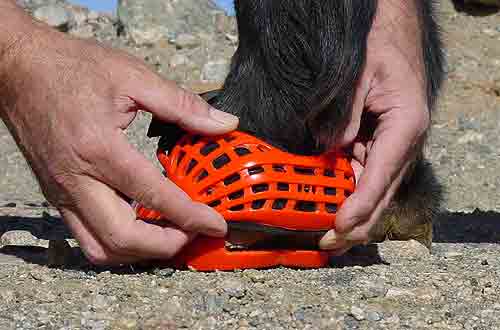
9. Double check the heel captivator position.
Review this page for more detail on heel captivator position:Heel Captivator Page
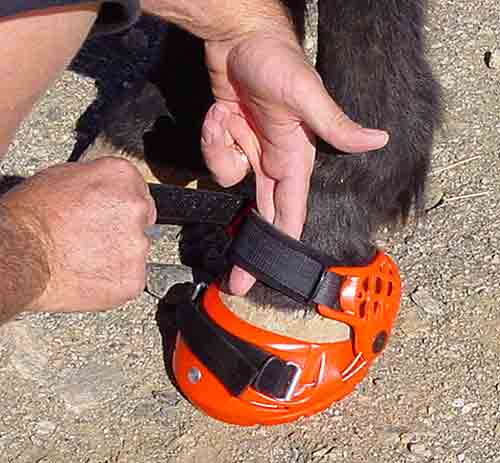
10. Temporarily fasten the toe strap to keep it from lying on the ground. Then fasten the pastern strap but make sure this strap has some clearance to the pastern.
THE PASTERN STRAP SHOULD NOT BE TIGHT!
The pastern strap is NOT the primary means of boot retention, this is the job of the heel captivator. The pastern strap is a “check strap” to prevent the heel captivator from pulling downward off the heel bulbs like in the event of an overreach from a hind hoof or interference with opposing hooves or when riding through heavy brush etc.
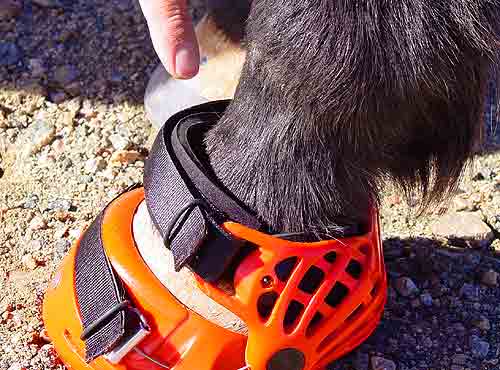
11. You should see a gap under the strap like this!
Setting the pastern strap tightly will not allow the heel captivator to find it’s equilibrium with the bulbous shape of the heel bulbs and may force it up against the backside of the pastern bones which could lead to rubbing.
Keep in mind that just as the pasterns descend during weight loading, they also move forward just before the hoof leaves the ground. If the pastern strap is too tight, then this forward movement of the pastern acts upon the heel captivator pulling it forward and upward in an undesirable cyclic manner.
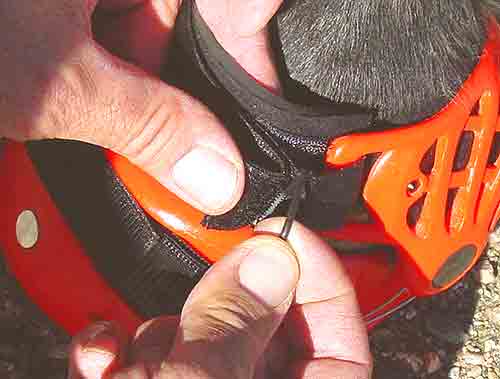
12. When you are happy with the pastern strap adjustment, press the strap well together and secure the end by pushing it under the rubber keeper loop.
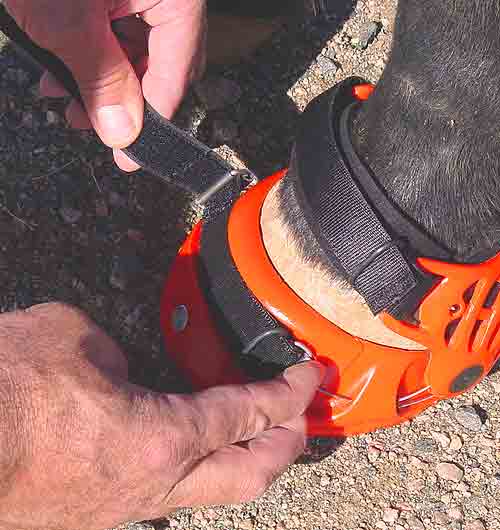
13. Now go back to the toe strap and set the strap tension by pulling the metal cable adapter with one hand and the strap with the other. In this way you can pull evenly from both sides helping to keep the heel captivator centered on the heel bulbs.
Warning! It is not necessary to tighten the strap tightly. Just get the strap “snug”. Think about your own shoes, do you like them overly tight?
In dry conditions I have galloped a horse wearing the boots with no tension whatsoever! “No Tension” means that I took out all the slack from the cables by pulling on the strap using only a few ounces of force and no more.
Each user of the boot will need to experiment with tension settings to discover what degree of tension works best for the way your horse moves, the speed you ride and the environmental conditions you ride under. In all cases you should always start with loose settings and work your way up from there. If you are having boot retention problems, setting the strap “super tight” is NOT the solution.
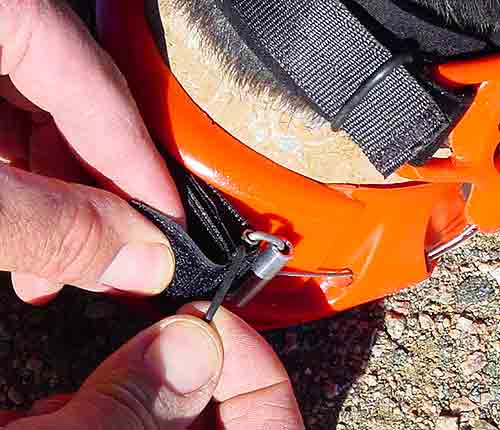
14. When you are satisfied with the toe strap setting, secure the end of the strap by pushing it under the rubber keeper loop.
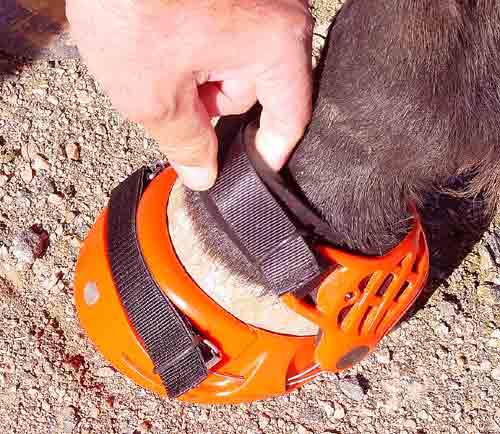
15. After setting the tension on the toe strap, double check the pastern strap clearance and readjust if necessary.

16. You should see a gap under the strap like this!
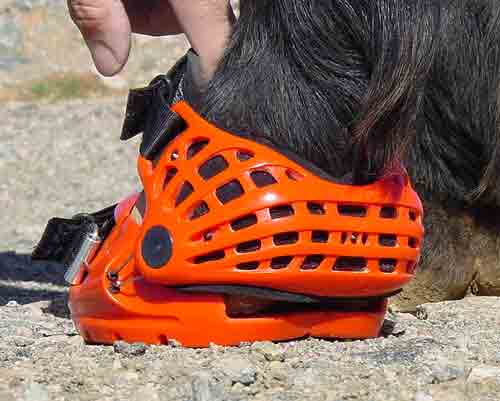
17. Also double check that the heel captivator is positioned well up onto the heel bulbs. It is important that the heel captivator is positioned properly so as to mate with the bulbous contours of the heel bulbs, allowing pressure acting upon the heel bulbs to be spread evenly.
Positioning the heel captivator too low can cause excess pressure on the top edge of the captivator and can allow the heel bulbs to pop out of the boot. Positioning the heel captivator too high can cause the heel captivator to interfere with the pastern bones.
Review this page for more detail on heel captivator position:Heel Captivator Page
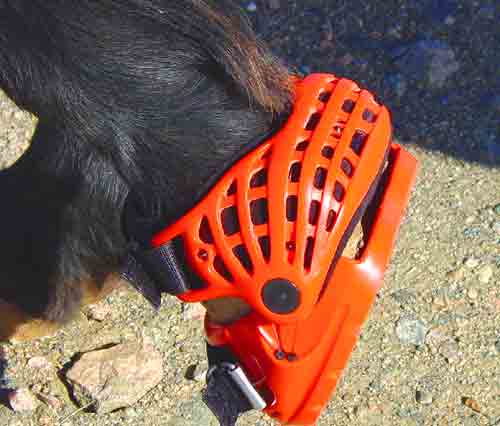
18. If needed, lift the hoof back off the ground so you can better check the heel captivator position.
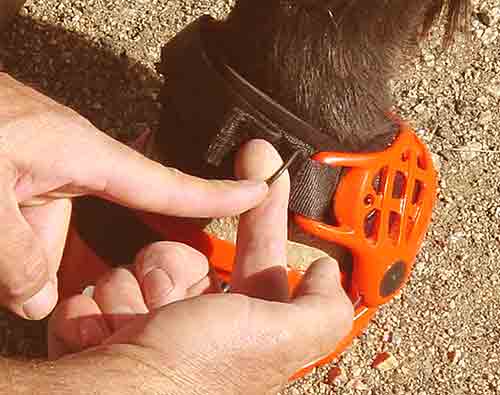
19. REMOVING THE BOOT: Begin by pushing the end of the pastern strap under the rubber keeper loop.
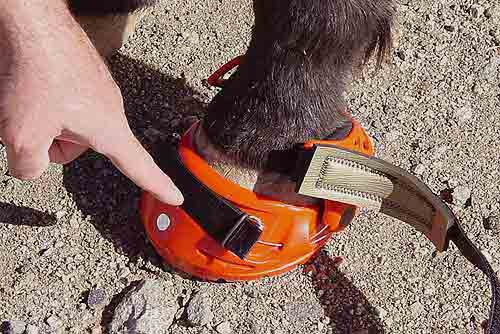
20. While very important for purposes of installation, to remove the boot it is not necessary to unfasten the toe strap, especially if you follow our recommendations regarding toe strap tension.
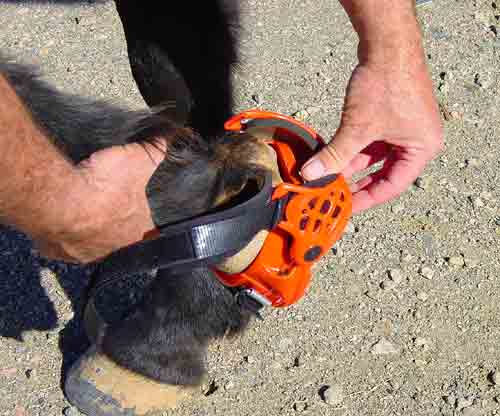
21. Pick up the hoof and pull the heel captivator downward off the heel bulbs.
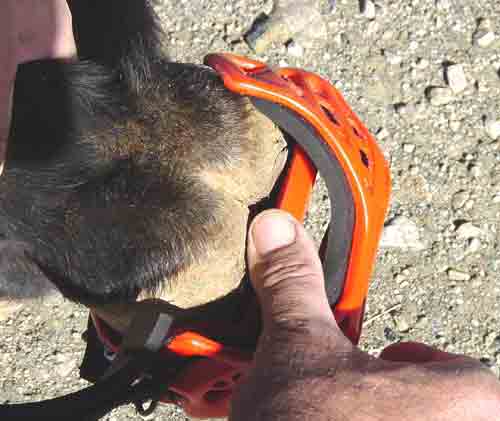
22. Use your thumb to push downward on the back of the boot base.
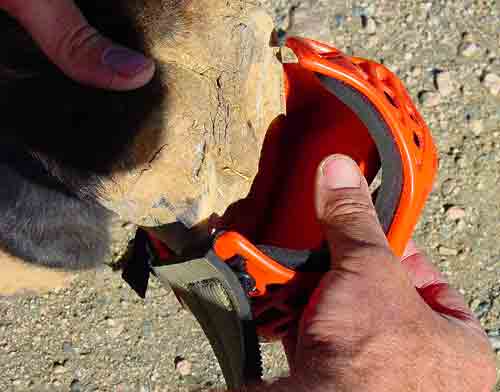
23. And push the boot off from the hoof.
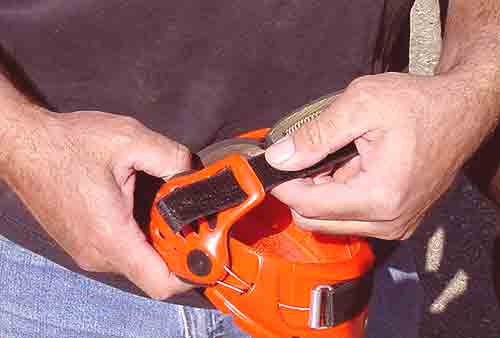
24. Be sure to clean the boots well, especially if you encountered muddy conditions during use. Always inspect the pastern strap and the toe strap for damage or wear.
Dried mud on the mating surfaces of the straps will reduce their holding power and may cause boot retention problems. These straps are considered “wear items” and may need to be replaced periodically but…. if you keep them clean and free from dried mud they can last the life of the boot.
When finished cleaning, reinsert the pastern strap and store in a dry place out of direct sunlight.
